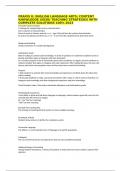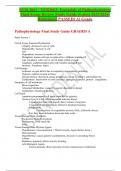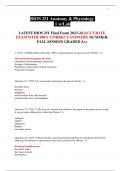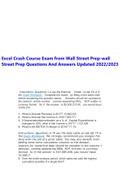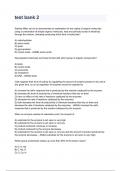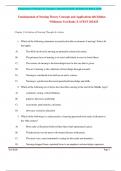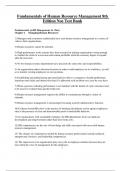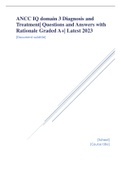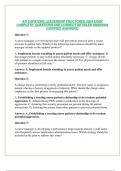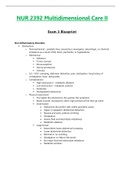Exam (elaborations)
PRAXIS II: ENGLISH LANGUAGE ARTS: CONTENT KNOWLEDGE (5038) TEACHING STRATEGIES WITH COMPLETE SOLUTIONS 100%
- Course
- Institution
PRAXIS II: ENGLISH LANGUAGE ARTS: CONTENT KNOWLEDGE (5038) TEACHING STRATEGIES WITH COMPLETE SOLUTIONS 100% 2023 Semantic Feature Analysis A strategy for categorizing terms by characteristics. Set in columns of characteristics. Rows of words or themes and put a + or - sign if they fall into the...
[Show more]
